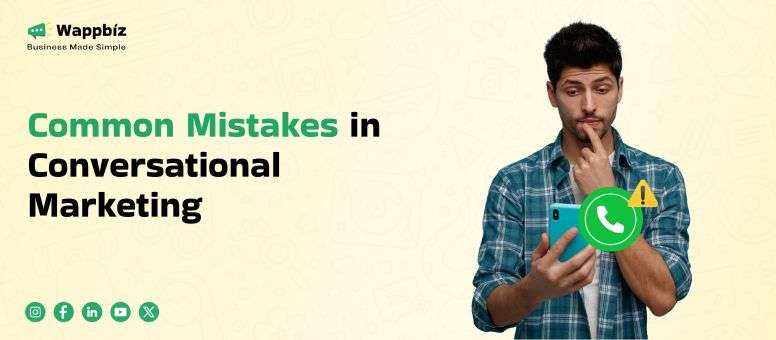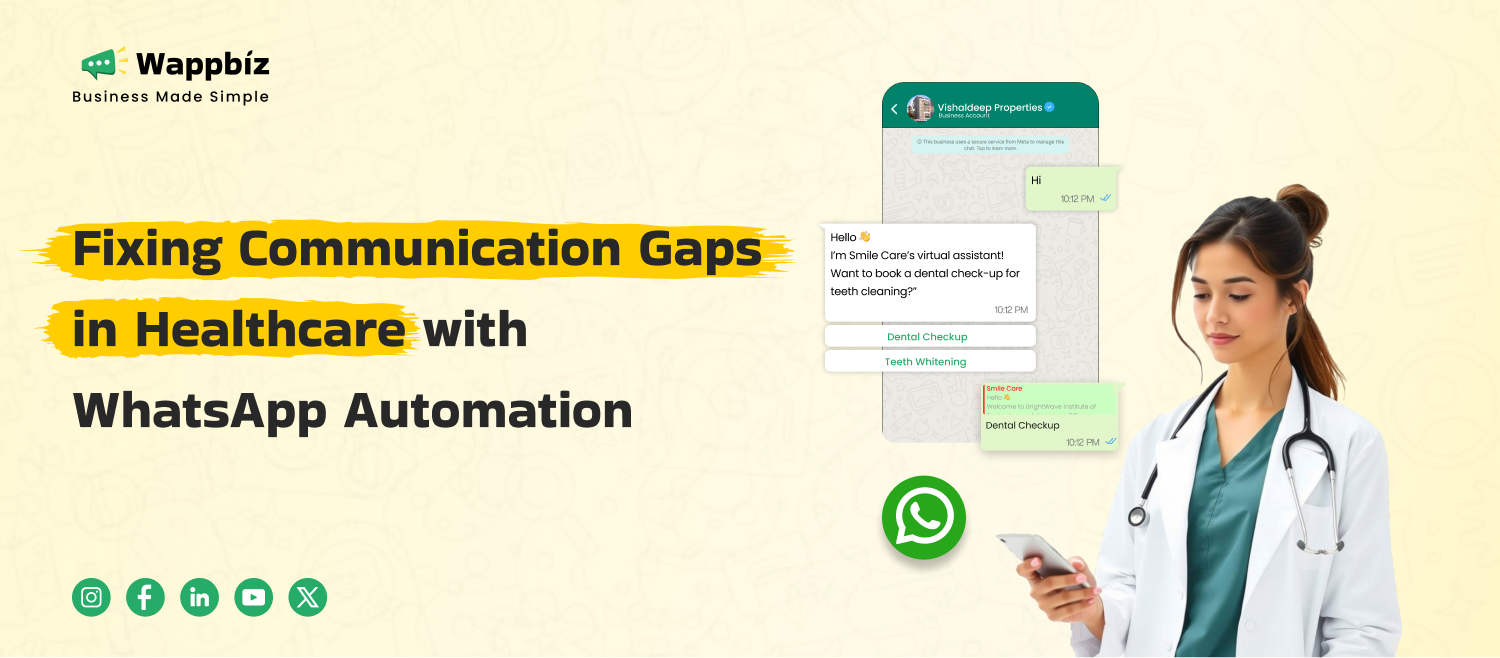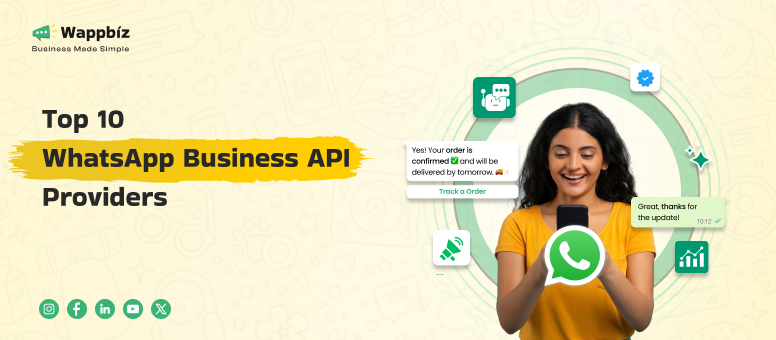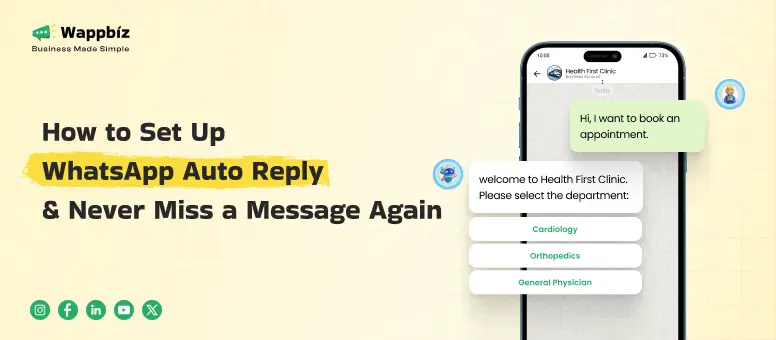Conversational marketing is now a weapon for businesses that can be used to interact with customers in real-time to increase sales, improve relationships and elevate customer satisfaction. But while it has great promise, too many companies are failing at it, due to some common conversational marketing mistakes that are holding them back.
This article covers these pitfalls and provide actionable solutions to help businesses optimize their conversational marketing strategy. Specifically, for decision makers like business owners, VPs, and even managers, it provides actionable advice for how to improve marketing, leading to more meaningful customer interactions and actual, human growth.
Common Mistakes in Conversational Marketing
Conversational marketing is one of the effective ways in which companies can directly communicate with customers, helping them get in touch with prospects in real time, make more sales, and improve customer loyalty. With the help of chatbots, artificial intelligence, and messaging applications companies are able to communicate with their audience immediately – which provides a more efficient and more personalized form of communication. But, there are many common mistakes that companies make that restrict the true power of conversational marketing. So, let’s analyze together these common mistakes in conversational marketing.
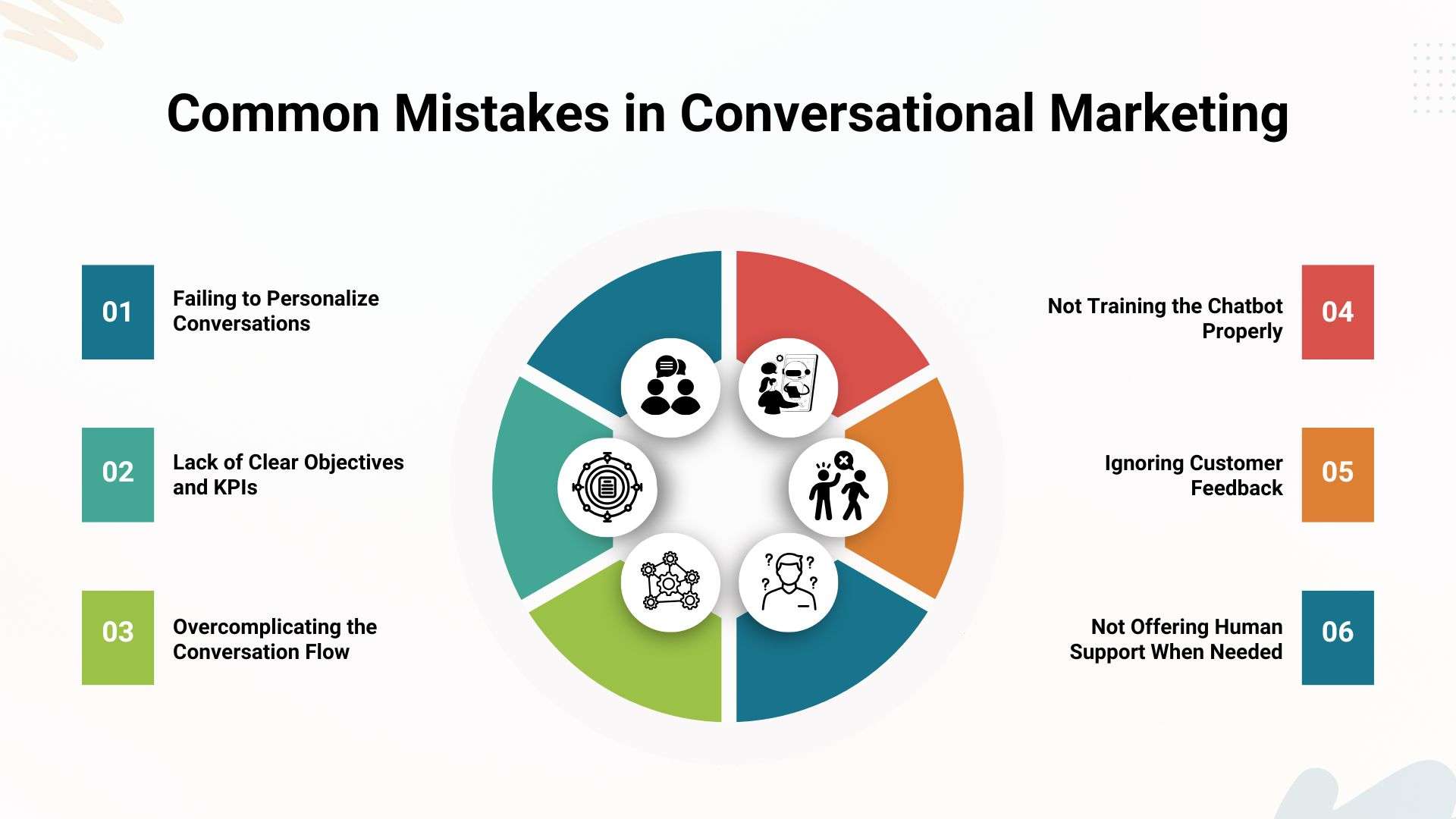
Mistake 1: Failing to Personalize Conversations
Issue:
Generic, robotic responses can severely damage customer engagement. When your customers feel like they’re talking to a robot who doesn’t get what they need, they’re going to be less likely to engage with you — let alone make a purchase. It’s all about personalization when you want to create valuable relationships and provide the best customer experience.
Actionable Tip:
Set up automated personalization templates based on user behavior or purchase history. For example, if someone had looked at a particular product, your chatbot could open with a tailored product recommendation or promotion. Always evaluate and refresh the strategies of personalization to keep in line to your current customer’s needs.
Mistake 2: Lack of Clear Objectives and KPIs
Issue:
So many companies jump into conversational marketing with no clearly defined goals or identifiable KPIs. For example, let’s say you’re running a new social advertising campaign, but you don’t define what success looks like – you won’t be able to determine how your campaigns are performing, and it can be tough to course-correct over time.
Actionable Tip:
Leverage analytics tools to monitor and optimize campaigns in response to feedback in real time. For instance, if you might want to grow conversions always track how many customer visit the checkout after conversation with the chatbot. Always go back to your KPIs Make sure to go back to your KPIs every time and adapt them to business priorities to keep your strategy aligned to growth goals.
Mistake 3: Overcomplicating the Conversation Flow
Issue:
Making conversation flow too complicated is actually the one of the common mistake companies make with chatbots. Tiresome and lengthy scripts can drive customers away from the conversation halfway through the process. The conversation flow needs to be seamless and intuitive for a natural conversation to maintain user interest and satisfaction.
Actionable Tip:
Frequently test and refine the conversation script, to ensure few steps and easy navigation. See if you can decrease the steps a user must take for a query or transaction to be completed. Also, include a way to talk to a live person for more difficult questions that need greater assistance. This approach ensures your customers always feel supported.
Mistake 4: Not Training the Chatbot Properly
Issue:
Unfiltered chatbots might read the most customer inquiries incorrectly and give frustrating or mistaken information in return. Poorly trained chatbot won’t be able to understand user intent, and the customer experience will suffer, as they will lack trust in your brand. In the era of AI and machine learning, you must keep your chatbot updated.
Actionable Tip:
Train your chatbot with machine learning algorithms so that it can learn from its users. For instance, if a chatbot makes a mistake when responding to a question asked, you can provide feedback to the system, which may then process such questions better in future. This ongoing learning means that your chatbot is getting better and better as time goes by.
Mistake 5: Ignoring Customer Feedback
Issue:
Customer feedback can be a goldmine for companies. Ignoring it means businesses will continue to be blind to their customers’ needs and pain points, and that conversational marketing will be held back. Feedback can provide valuable insights into the pain points that customers face and help businesses improve their marketing strategies.
Actionable Tip:
Integrate feedback loops where customers can rate their chatbot experience, and use the information to act accordingly. For example, if customers often express frustration at the chatbot’s replies, that’s a sign you need to train your system more. Acting on these concerns would greatly increase user satisfaction and ultimately lead to a better customer experience.
Mistake 6: Not Offering Human Support When Needed
Issue:
Simple questions can easily be answered with the help of chatbot automation, but when things are more complex, customers can get frustrated if they find they can’t escalate the matter to a human agent. Many businesses overlook the need to offer human support when needed, which can leave customers feeling stuck.
Actionable Tips:
Add a prominent button or prompt that enables a clear hand over to a live agent for when customer questions exceed the bot’s capabilities. Ensure that the hand over is seamless — that way, the customer doesn’t have to repeat information when interacting with the agent.
How to Fix Common Mistakes in Conversational Marketing
Conversational marketing can have a great impact on customer engagement and sales, many times businesses often make mistakes that reduce its effectiveness. Here’s how to fix these mistakes to improve your strategy.
Enhance Personalization
Strategies:
To deliver great customer experiences, companies need to tailor the discussions they have with individuals based on who they are, what they do, and what they like. Implement dynamic customer segmentation in order to customize messaging and use data driven insights to interact with customers in a relevant manner. Ensure chatbots are programmed to use this data effectively, creating personalized interactions that feel relevant to each individual.
Example:
We’ll share a real-world example of a large e-commerce brand who implemented personalized recommendations based on user behavior and purchase history shows how this approach significantly boosted engagement and conversions. By providing custom discounts and product recommendations, the business boosted sales by 25% and reported a 40% rise in customer satisfaction.
Set Clear Goals & Measure Effectiveness
Strategies:
Set clear, measurable objectives for each conversational marketing interaction. Whether it’s increasing conversion, reducing response time, or improving customer satisfaction, businesses need to set clear goals or objectives that they can use to measure their success. Monitor campaigns with key performance indicators (KPIs) and tweak as needed to reach goals.
Example:
A prominent digital marketing agency enhanced its WhatsApp marketing campaign with well-defined KPIs for lead conversion rates and customer engagement. By Tracking these metrics they could adjust your strategy, the business minimized its marketing effort and was able to increase customer acquisition by 30% and engagement by 15%.
Streamline Conversation Flow
Strategies:
Use conversational UI/UX principles to design chatbot interactions that are simple, intuitive, and user-friendly. The entire user flow should be effortless to navigate, which allows users to find their way through the platform without unnecessary steps. Focus on removing as much friction as possible in the conversation by asking only what’s necessary and making short, clear options for users to select.
Example:
One of the brands simplified their chatbot interface by using fewer options to users and made the responses more intuitive. User engagement also increased, users did more transactions and returned for more orders. The streamlined flow increased completed bookings by 20%.
Regularly Train and Optimize Chatbots
Strategies:
Build automated machine learning models that allow your chatbot to learn from previous interactions with users. Through continuous data analysis, chatbots learn and are able to refine their responses, for increased accuracy over time. This ongoing training scheme allows the bot to cope with an ever-expanding set of customer questions and indicate greater empathy for users.
Example:
A chatbot for a telecom provider was regularly updated with new customer data, improving its ability to handle complex queries. Over time, the chatbot became more accurate in understanding and resolving customer issues, leading to a 50% reduction in handoffs to human agents and a 35% improvement in customer satisfaction.
Implement Customer Feedback Mechanisms
Strategies:
To ensure your conversational marketing strategy is matching customer needs, use feedback devices, such as surveys, rating systems, follow-up questioners after each interaction. Leverage this information to understand how your customers feel and to optimize your chatbot KPIs.
Example:
A hotel chain introduced feedback surveys post chat where they ask customers to give ratings of their chatbot interaction. Listening to customer frustrations over response time and accuracy helped the company make adjustments that led to a 20% increase in positive feedback and better customer retention
Not Offering Human Support When Needed
Strategies:
To ensure your conversational marketing strategy is matching customer needs, use feedback devices, such as surveys, rating systems, follow-up questioners after each interaction. Leverage this information to understand how your customers feel and to optimize your chatbot KPIs.
Example:
A hotel chain introduced feedback surveys post chat where they ask customers to give ratings of their chatbot interaction. Listening to customer frustrations over response time and accuracy helped the company make adjustments that led to a 20% increase in positive feedback and better customer retention
Conclusion
Fixing common mistakes in conversational marketing can lead to significantly improved customer engagement, conversions and customer experience. Through improving the personalization, goals, conversation flows, and training of chatbots, brands can make sure their conversational marketing is making a positive impact. Adding feedback loops, layering in human support when necessary and maintaining consistency across outlets will allow for a stronger, customer-focused marketing strategy. By correcting these blunders, companies can fine-tune their conversational marketing strategy and ultimately generate better results.
Also read about Top 8 Conversational Marketing Tools to Boost Customer Engagement

FAQ’s
What are the most common mistakes in conversational marketing?
Common mistakes include lack of personalization, unclear goals, overcomplicated flows, untrained chatbots, ignoring feedback, and not offering human support when needed.
How can I improve personalization in conversational marketing?
Personalize by using customer data to tailor messages based on their behavior and preferences, leveraging AI-powered chatbots to create more relevant and engaging interactions.
Why is human support important in conversational marketing?
Human support is crucial for handling complex issues that chatbots can’t resolve, ensuring customers feel valued and supported throughout their journey.

